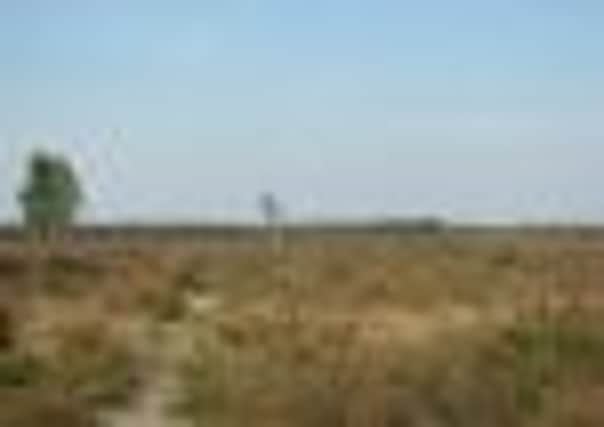Angus Robertson: The close of a dark chapter in military history


The Lüneburger Heide is a large area of heathland between Hanover and Hamburg. A striking area of shrub, geest and woodland, its beauty is largely protected as a nature reserve, but it is also home to the largest military training area in Europe. This dates back to the 18th century when the armed forces of Hanover trained here at the same time as Hanoverian redcoats were opposing Jacobites in Scotland. It was however the rearmament and militarisation of Germany in the 1930s that fundamentally changed things on the Lüneburg Heath. More than 3,000 local people were cleared from their farms and 25 villages forcibly emptied so the Wehrmacht and Waffen SS could use the area to practice for the Blitzkrieg. Large bases were constructed at Bad Fallingbostel, Bergen-Hohne and Celle.
When the war started, additional camps housed Soviet and other prisoners in horrific conditions. The scale of the horror is commemorated in a forest clearing in Oerbke where 30,000 prisoners are buried.
Advertisement
Hide AdAdvertisement
Hide AdClose by is the site of the Bergen-Belsen concentration camp. Its liberation in 1945 was movingly reported by the BBC’s Richard Dimbleby, fully exposing the inhumanity of the Nazi Third Reich. Tens of thousands of Jews died at the camp, including Dutch schoolgirl and diarist Anne Frank. Shortly after the liberation, the architect of the camps SS Chief Heinrich Himmler was captured nearby. He cheated justice and the Nürnberg War Crimes Tribunal by committing suicide and is buried in an unmarked grave on the Lüneburg Heath. The region was also the scene of the German surrender to General Bernard Montgomery.
Since the Second World War, the military bases and training area remained important, being strategically placed on the north German plain which was feared to be the most likely invasion route by the Warsaw Pact during the Cold War.
For decades, Scottish units like the Royal Scots Dragoon Guards and The Highlanders have trained on the Lüneburg Heath and communities like Bad Fallingbostel have become home for hundreds of service families. When I visited the town last week, its mayor, Rainer Schmuck, paid tribute to the enduring connections and affection that has developed with local people. Service children attend local schools, shops stock popular UK products and local businesses rely on military personnel and families.
This reality is about to be significantly tested when the UK confirms details about the return of military units from Germany. The impact will be a significant blow to the local economy, leaving barracks and service accommodation empty and hitting businesses hard. The drop in population will exacerbate problems, leading to a reduction in funding for local authorities who will need every support to mitigate the effects of the draw-down.
Ironically it is a local German decision-maker of Scottish decent who is currently having to plan for this transition. David McAllister is the son of a Glaswegian serviceman and a German mother and as the Prime Minister of Lower Saxony is responsible for working with local authorities on the impact of base closures. Last week he hosted First Minister Alex Salmond in Hanover to develop economic links with Scotland, particularly around renewable energy. McAllister has a positive vision for future economic growth, diversification and the environment.
This will be important for Lower Saxony as the region deals with the consequences of UK military base closures which are happening at the same time as the German government reduces the presence of the Bundeswehr in many parts of the country.
Nevertheless, when looking at these developments in the context of the last century it has to be welcomed that the page is finally turning on the dark legacy of the Second World War and Cold War. This week, high school students from Bad Fallingbostel took part in a special annual commemoration in Oerbke. Each student had made a name plate for one of the 30,000 Soviet prisoners buried in the ‘cemetery of the nameless’. They were fixed on memorial posts next to an information board with a moving message from the granddaughter of one Russian prisoner. She wrote of her appreciation to the young Germans who are making sure that the victims are remembered and mistakes of the past are never repeated. «
• Angus Robertson is MP for Moray and the SNP’s spokesperson on foreign affairs and defence